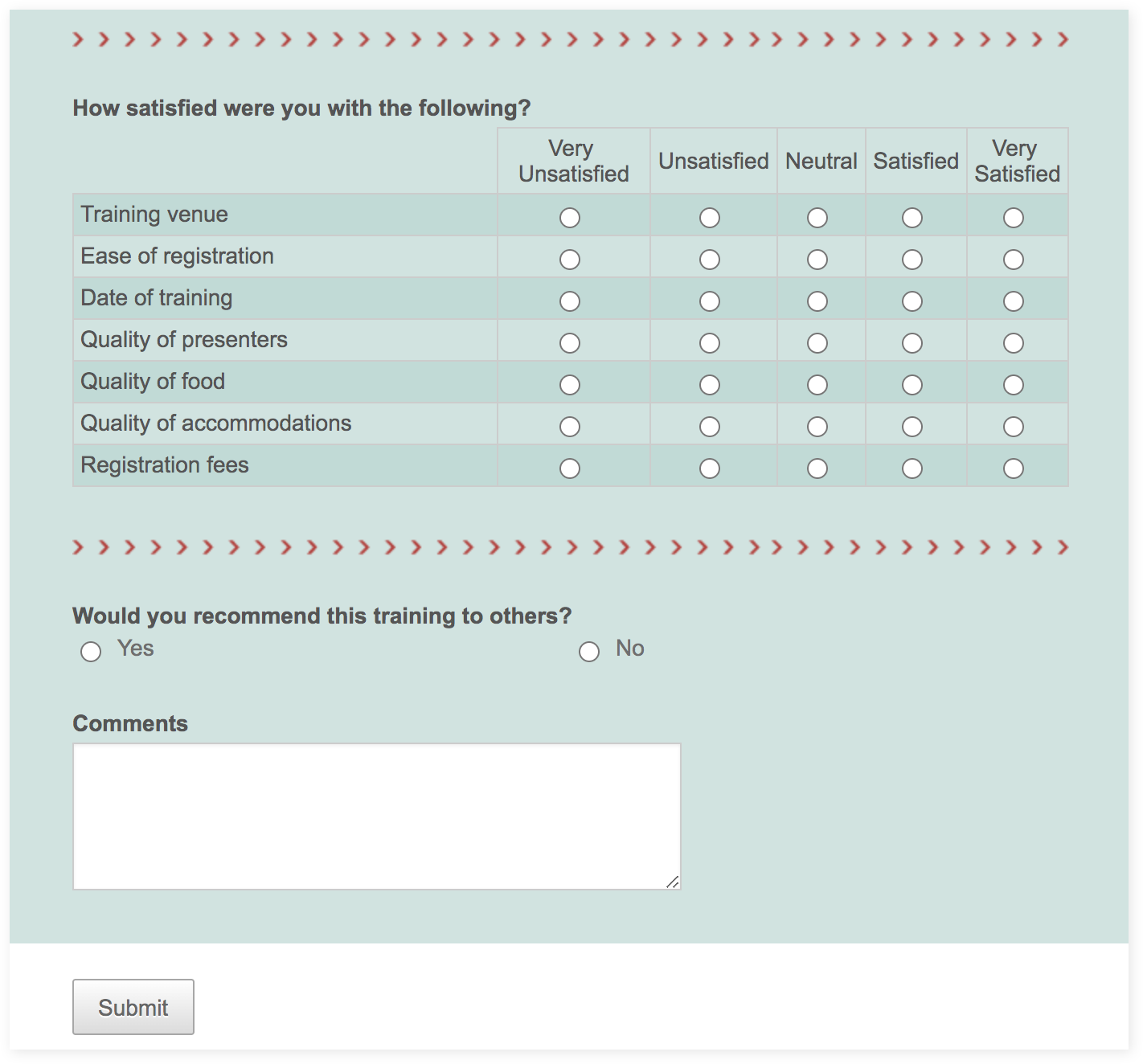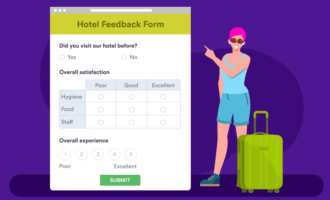In recent years, companies have realized just how critical employee engagement is to overall performance, team satisfaction, and employee retention. Empowering employees to share their opinions paves the way for human resources professionals and company leadership to make well-informed decisions about the future of the organization.
One of the most widely used tools for gaining, understanding, and monitoring employee feedback is the pulse survey. Pulse surveys are an excellent way to supplement annual employee surveys on a more frequent basis throughout the year.
This post will walk through the definition of a pulse survey (and most important, what it is not), the survey’s benefits, and how to create an employee pulse survey that fits your needs.
What is a pulse survey?
A pulse survey is a survey that contains just a few short questions to gather employee feedback on a particular topic over the course of a certain time period. The frequency of pulse surveys can vary from weekly to quarterly. Given their high frequency, pulse surveys should be brief and shouldn’t take longer than a few minutes to complete.
The short format distinguishes pulse surveys from longer, more formal annual employee surveys. Where annual surveys can encompass many questions covering a range of organizational functions and initiatives, pulse surveys zero in on one initiative or topic to check employees’ temperature on that subject. They give you a “pulse” of where employee sentiment is at a particular time.
Annual surveys are valuable in their own right. They help leadership gain feedback on the nuances of company culture and organizational direction. However, with many questions comes a lot of data collection and analysis — this doesn’t even factor in the action planning based on the results of your survey. When you consider all the preparation and post-survey work involved in the process, making annual survey data meaningful in real life can take a lot of time.
Enter the pulse survey, which allows your employees to provide the critical feedback they want to give throughout the year. You can quickly and easily build pulse surveys, and customize them to meet your needs.
With more real-time data, your team can be more agile and, if necessary, act on the resulting feedback for a given topic. Think of it this way: If large-scale annual employee surveys are the wheel, pulse surveys are the spokes that prop up the wheel and ensure you’re heading in the right direction.
What are the benefits of a pulse survey, and why do you need it?
Now that we’ve gotten the definition of a pulse survey out there, let’s talk a little bit about why it’s beneficial (and necessary) for your organization, its leadership, and your HR team.
We probably all agree that no organization should make a major business decision without first understanding how it will impact customers. Well, your employees are your first and most important customers.
The consistent engagement and feedback of your employees is critical, and getting a pulse on how they’re feeling shows them that you’re invested in their contributions and development. When employees know that their thoughts aren’t just valued but help guide actual business decisions, they become more engaged at work.
Over the years, there have been a bunch of reports on the correlation between employee engagement and higher organizational productivity. Gallup’s most recent State of the American Workplace report shows that highly engaged business units see a 17-percent increase in productivity and 59 percent lower employee turnover than less engaged business units.
One of the biggest benefits of a pulse survey is its ability to keep your employees engaged on a consistent basis. When employees are engaged, they feel a sense of ownership in the organization and become more satisfied, because they know they are appreciated. Employees feel informed about the company because they are the ones helping the information along. As a result, you have happier team members who are encouraged to go above and beyond in their roles.
A little later on, we’ll highlight ways to ensure that employees continue responding to your surveys and stay engaged.
Speaking of responses, another benefit of pulse surveys is the response rate. Pulse surveys typically have response rates from 90–100 percent, whereas annual surveys commonly have response rates of 30–40 percent.
We talked earlier about the wheel/spoke relationship between the two survey models; these stats highlight just how important pulse surveys are in obtaining more responses so you can paint a clear picture of the results for your HR department and executive leadership.
And it doesn’t stop there. Pulse surveys also allow you to
- Dive deep on certain topics or issues. Centering the whole survey (even though it’s brief) on one topic alerts employees to an area of need and creates momentum for change.
- Feed action planning. Collective feedback on a specific idea fills in the gaps needed to craft a well-rounded plan of action that represents everyone involved.
How to create a pulse survey that fits your needs
Now that we know what the pulse survey is about and why it’s important to your organization, let’s explore how to create an effective pulse survey.
Whether you’re creating your first pulse survey or your fiftieth, it’s important to keep in mind that there are several factors that can make or break your survey. Which questions you include, how you pose the questions, how often you send your surveys, and what you do with the information you’ve gathered all play a part in creating a survey that fits your specific organizational needs and ensures a high response rate.
Which questions you include
Surveys are unique because they not only measure engagement but can also help engage employees as well. The questions you include in your survey depend on your goals and company. However, several areas it’s a good idea to focus on in a pulse survey include employee satisfaction (as it relates to the topic of focus), culture, trust in management and leadership’s role in the initiative, communication, and related personal growth opportunities, or attitudes toward the topic at hand.
Additionally, here are some essential employee engagement questions that can help get your juices flowing.
How you pose the questions you include
Depending on the purpose of your survey, there are usually three ways to pose the questions you use to gain feedback.
- Likert scale
- What is it? A Likert scale is a 5- or 7-point scale that generally rates a user’s level of agreement with a topic or statement. These scales can also be used to measure frequency, quality, and likelihood.
- Why Likert scale responses matter for pulse surveys. Instead of a simple yes or no, Likert scales cover a range of opinions. They yield quantitative data that can be reviewed and analyzed easily.
- Dichotomous scale
- What is it? A dichotomous scale is a two-point scale with options that are opposites (i.e., yes/no, fair/unfair). This type of response scale requires the user to commit to a choice one way or the other.
- Why dichotomous scale responses matter for pulse surveys. Quite simply, these questions are short and easy to answer. Dichotomous questions should be used if there are only two possible answers, as opposed to questions meant to ascertain the degree of feeling or emotion.
- Open ended
- What is it? An open-ended question allows the user to provide feedback in their own words.
- Why open-ended responses matter for pulse surveys. These responses are valuable for collecting qualitative feedback; they help reinforce the quantitative data you’ve collected elsewhere in the survey.

Keeping in mind that pulse surveys should be short and quick to complete, we suggest using a mix of these question types with no more than one or two open-ended questions to increase the number of responses.
How often you should send your surveys
Pulse surveys are short and either used to chart the course of a topic over time or for a quick reaction to an initiative. But you should be careful about their cadence: Both using them too often and not using them enough can result in lower engagement rates (or worse, a loss in employee trust).
Here are a few rules for survey frequency:
- Pulse surveys should be sent either monthly or weekly in order to accurately track change.
- The shorter your survey, the more frequently you can send it; the longer the survey, the less frequently you can send it.
- Conduct your surveys frequently enough so that your employees can give meaningful feedback, but not so frequently that you can’t act upon the results between questionnaires.
What to do with the information you’ve gathered
As we mentioned earlier, pulse surveys enjoy high response rates and engagement. But to keep those rates high, ensure employees maintain their focus, and guarantee your department’s surveys are successful, you should keep a few guidelines in mind.
Collect data. Collecting and organizing the data we’ve captured can be a time-consuming, back-and-forth process. The faster you can retrieve data (whether it’s coming from laptops or mobile) and fit it into an easily understood format, the quicker your team can act on the responses you’ve received.
Just so you know…
Jotform helps you eliminate the back and forth by assigning forms to team members, who can then gather and manage form submissions on any device — even offline with Jotform Mobile Forms!.
Be transparent. Make sure to share the data you’ve collected with all relevant teams. Also, include a summary of progress since the last survey as the team will want to know about the outcomes of their prior feedback. Leadership will be happy employees are sharing and helping the company grow. Employees will be more confident in their workplace, knowing that information flows freely and decisions aren’t made in a vacuum.
Just so you know…
After you gather survey responses, feedback, and important customer data, the Jotform Report Builder can turn it into professional reports and presentations that automatically update with each new submission.
Take action. Compile the results of your pulse survey and turn that data into insights so you can create an action plan that resonates with the entire organization. When meaningful action planning results from employee feedback, team members appreciate the investment being made in them and become more engaged.
Jotform offers more than 300+ survey templates, making it easy to collect the data you need. You can use a survey template or start from scratch with a basic survey using your own employee engagement survey questions.







































































































Send Comment: